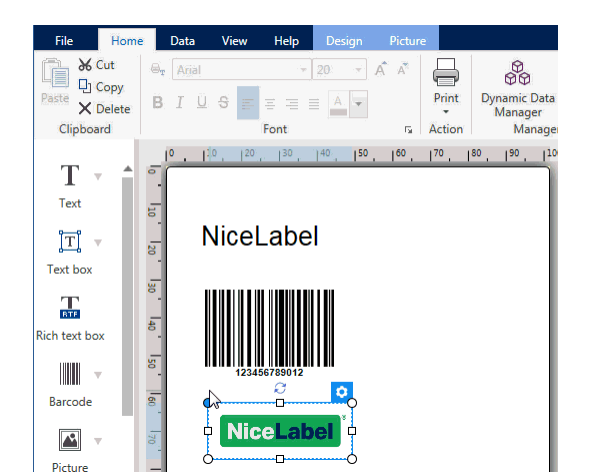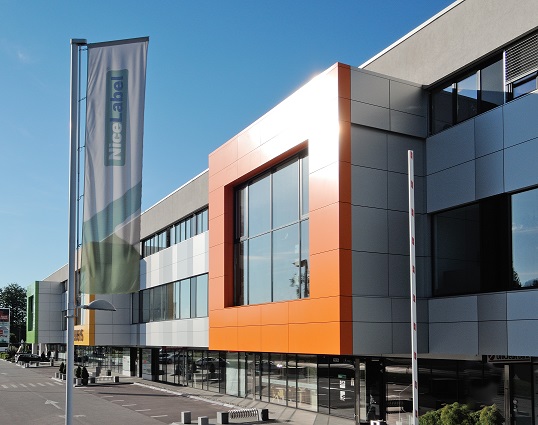Catching up with NiceLabel - Questions and Answers With A Leading Barcode Software Company
 Sometimes, the most interesting reading is an in-depth one-on-one discussion where we look at the past as well as the future. This article, in a question and answer format with NiceLabel, offers insights from a mature and still growing software company that has thrived over more than 25 years, in spite of being in the rapidly evolving world of computer platforms, operating systems and hardware.
Sometimes, the most interesting reading is an in-depth one-on-one discussion where we look at the past as well as the future. This article, in a question and answer format with NiceLabel, offers insights from a mature and still growing software company that has thrived over more than 25 years, in spite of being in the rapidly evolving world of computer platforms, operating systems and hardware.
NiceLabel was established in 1993 by Slovenian entrepreneur, Zvone Duplancic, to develop software solutions for local businesses. After successful completion of a challenging project for a Japanese printer manufacturer, NiceLabel recognized the barcode label printer market was growing quickly and offered an opportunity for it to meet the demand for the development of Windows printer drivers and barcode label design software for these new specialty printers.
Q: What markets / niches did NiceLabel first succeed in? What was the subsequent arc of growth due to?
A: Initially, NiceLabel’s core focus was on developing label printer drivers; a need that was recognized across all industries. Its first Microsoft Windows drivers for thermal label printers were released in 1995 and Windows NT printer drivers quickly followed in 1997. By 1999, NiceLabel achieved Microsoft Windows certified accreditation. Because NiceLabel drivers and label design software were fit for application across a broad range of industries, the company was perfectly positioned for rapid growth as it introduced its enterprise labeling solutions in 2006.
Q: How has the original product changed over the decades? Was it originally on PCs? Mainframes? How did it evolve into its present incarnation?
A: The evolution of NiceLabel’s software from printer drivers to label design software to an enterprise label management system has been driven by its customers. Over the years, government and industry regulations have become more stringent and customer responsiveness, operational efficiency and supply chain collaboration have become essential for companies to remain competitive. These factors drive change in terms of how labeling solutions enable companies to not only weather the change, but thrive by driving cost saving efficiencies in the labeling process and uncovering opportunities to get product to market faster. NiceLabel keeps a pulse on industry trends and customer requirements in order to develop labeling technology that is at the forefront of market demand.
Q: What have been the biggest changes to the label industry? Has it been regulation? The growth of the internet?
A: The most important factors affecting the label industry have been an ever-broader array of global legislation pertaining to the marking, labeling and packaging of products and the prevailing trend of digital transformation in manufacturing and logistics. While regulation is a constant driver of change, we see SMBs and large enterprises alike making a big shift toward legacy system modernization (i.e. digital transformation of labeling) over the past few years.
Q: How many offices does NiceLabel have, which are the newest?
A: NiceLabel employs a very diverse team of 150 people based in 12 countries. Headquartered in Slovenia, NiceLabel has sales and support offices in the USA, Germany and China in addition to regional offices with team members in all core geographic markets. Operating as one virtual global team, NiceLabel serves and supports its clients around the world. The most recent change was NiceLabel Germany’s move to upgraded offices that will enable cutting edge collaboration and provide our clients with the products, services and training courses at a higher level than ever before.
Q: How will the label industry change in the future? 
A: We see the next wave of the digital transformation of labeling being the cloud. Companies of all sizes can benefit from the productivity gains that the cloud delivers. No massive budgets are required, nor huge IT teams. In the past, it was enterprises with big pockets and skilled IT teams that deployed label management systems. Now, with the digitizing of processes and the advent of cloud and software-as-a-service offerings, there are fewer barriers to entry for smaller organizations as less hardware and investment are needed.
Q: What are the top challenges companies face with labeling today? Are certain industries impacted more than others?
A: We observe that companies face the need for increased speed, especially around designing labels, digitalizing the quality assurance process to remove risk and eliminate unplanned downtime. This results in companies demanding a global labeling solution that standardizes on one solution and centralizes the entire label management process.
The labeling software industry serves a host of industries, from chemical and pharmaceuticals, to food and beverage, medical devices, aerospace and automotive. Each of these industries has its own unique regulatory requirements which seem to constantly evolve and change. In the pharmaceutical industry, document control, integrating label management systems with ERP/MES and other systems, and scalability are the most common challenges in an increasingly complex and fragmented production environment that often involves managing multiple products, locations and markets. The medical device industry is facing the European Union Medical Device Regulation (EU MDR) and how to implement its labeling directives. In the food and beverage industry, one of the major current developments is the proposed changes to allergens labeling for all on premise prepacked food for direct sale in the UK - this will impact all sizes of businesses and the processes needed to produce labels accurately and seamlessly. In the US, food and beverage manufacturers must update their nutrition facts labels by 2020 or 2021 depending on their size.
Q: What common trends are you or your customers seeing?
A: In the labeling software sector there’s been a definite move away from label designers to label management software, in an effort to obtain better document control and approval workflows.
Q: What should a company look for when integrating a new label management system? What should be avoided?
A: Getting stakeholder buy in and aligning on goals for a label management tool implementation can be a challenge; however, both are essential for a successful project. Helping management to understand the cost implications of legacy labeling systems and processes will help them to see labeling as a business-critical application and justify a modernization effort.
Data is one of the most important considerations when implementing a label management system. For many companies, data resides in different places, whether due to acquisitions or poor data management practices. At the end of the day, companies need to consolidate their data in order to leverage a single source of truth for labeling.
Once the labeling system is implemented, focus shifts from data to the end of the process. How will the business consume barcodes and packaging? One of the key challenges centers on resources and roles. It is important to designate an owner for each part of the labeling process. For example, IT should own supplier connections since they pose a security risk while the labeling team owns label design. A new reality for many companies is that IT resources are thinning out and expensive. It is important that whenever possible, companies empower the business user to reduce the dependence on IT and take more ownership of labeling.
Q: How have cloud-based solutions changed the labeling process?
A: A cloud-based label management system enables businesses to centralize the label management processes and be able to store, change and approve all labels in a centralized location. This ensures that everyone can access the right, most up-to-date information wherever they may be located across the business or across the country. This also applies to global operations, making information available to suppliers, partners or affiliates, if needed. Cloud-based or SaaS systems ensure businesses can move easily and quickly away from legacy IT solutions that may be more of a hindrance to the process than anything else.
Q: What’s next for NiceLabel?
A: NiceLabel has grown rapidly in recent years as it has extended its product range, geographic presence and channel. Focusing on organic growth within its target market, it is investing in a balanced way across its development and commercial teams to extend its technology advantage and to increase global presence. The company’s core strategy choice remains differentiation based on domain expertise and superior technology. In the longer term it sees the opportunity to apply its world-class software development skills to adjacent high growth markets.
Readers can find out more at the NiceLabel website!
Article by Craig Aberle
Images courtesy of NiceLabel
